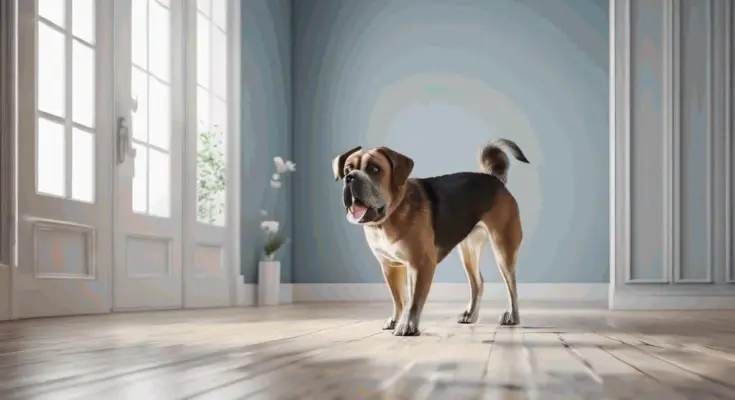Intro
If you’re thinking of a way to stop dog pooping in the residence, you’re no longer on your own. Many canine proprietors face this assignment, mainly while first bringing a new canine or doggy domestic. It’s crucial to not forget that whilst this behavior may be frustrating, it is practicable with the right method and steady education.
Understanding the Cause of the Problem
Identifying the basic cause of your dog’s indoor removal is a critical step in preventing this behavior. Various elements can cause a dog to poop inside the residence. The maximum not unusual among these is inadequate residence education, especially in dogs or newly adopted puppies.
However, other factors like anxiety, modifications in surroundings, or changes in their daily routine also can trigger this. Sometimes, the difficulty may additionally also be fitness-associated, together with digestive problems or other medical conditions. Investigating those capacity reasons can offer treasured insights and help tailor your technique to prevent stop dog pooping indoors. Knowing what is prompting the conduct will useful resource in formulating a powerful answer.
Scheduling Consistent Potty Breaks
One key method to halt the occurrence of your dog eliminating indoors is by creating a routine for outdoor bathroom breaks. This is particularly crucial for younger dogs and puppies who need to void their bowels numerous times throughout the day. By taking your dog outside at consistent intervals, you help establish a rhythm for when and where they should relieve themselves.
This regularity can greatly minimize the chances of indoor accidents as your pet learns to associate outside with going to the bathroom. Implementing a consistent bathroom schedule aids in regulating your dog’s body and reinforces the understanding that the home is not their bathroom. It’s also beneficial to time these breaks strategically, like after meals or playtime when your dog is most likely to need to go. By doing this, you’re gradually training your pet to anticipate and wait for these scheduled breaks instead of using the house as their restroom.
Utilizing Crate Training Techniques
Crate training serves as an effective tool in helping your dog understand that indoors is not a place for elimination. Dogs typically have a natural aversion to soiling their sleeping quarters, which a crate essentially represents. By using a crate, you can capitalize on this instinct to instill proper potty behavior. However, the crate must be the right size—large enough for your dog to comfortably move around, but not too big that they may designate a corner for waste. The primary goal is to create a space your pet perceives as a haven, not a punishment zone. Over time, the regular use of a crate for relaxation, combined with regular outdoor bathroom breaks, encourages your dog to hold their bowel movements until it’s appropriate to relieve themselves outside.
Implementing Reward-Based Training
To effectively make use of reward-based total education to discourage your dog from disposing of the interior, it is essential to seize your canine in the act of doing something right, not wrong. When your dog well makes use of the outdoors for his or her bathroom desires, make certain to delay praise and reward them. This immediately wonderful reinforcement strengthens the affiliation between the precise conduct and the praise.
This might be in the form of a favorite deal, extra playtime, or maybe a simple pat on the pinnacle. However, timing is crucial. The reward must be received as quickly as your canine finishes disposing of it, not later, to make certain they recognize what the praise is for. The greater steady you’re with this reward machine, the quicker your canine will recognize that stopping dog pooping outdoors results in a nice outcome. Remember, praise-based training is all approximately encouraging and reinforcing the conduct you want to peer, now not punishing the conduct you do not.

Addressing Potential Health Issues
In some times, chronic indoor removal will be a trademark of underlying health troubles. Various scientific situations such as gastrointestinal problems or urinary tract infections can potentially make it challenging for your dog to control their bowel movements. If the indoor injuries persist even after enforcing consistent potty schedules, reward-primarily based schooling, and different methods, it’s recommended to seek advice from a veterinarian. Your canine’s health might be causing this undesirable behavior. A veterinary expert can behavior vital assessments and examinations to check whether health trouble is prompting your dog to get rid of its interior. Prompt diagnosis and remedy ought to cope with the problem, improving not just your canine’s fitness but additionally their potty conduct. Always prioritize your canine’s wellness and never hesitate to search for professional veterinary recommendations when wanted.
Maintaining Patience and Consistency
House training your dog requires a consistent routine, but equally as important is your attitude throughout the process. It’s crucial to keep your patience intact, even when accidents occur. Reacting harshly or with frustration can increase your dog’s stress levels, which may lead to more indoor accidents. Instead, focus on reinforcing the correct behaviors and gently correcting the wrong ones. Understand that your dog is learning something new and might need some time to adapt fully. Consistent reinforcement of the proper outdoor potty routine will eventually yield the desired results. Don’t forget that it’s a process and every dog learns at their own pace. Stay consistent with your approach, ensuring the rules and routines don’t vary. Remember, house training is an ongoing process, and keeping your cool while maintaining a steady routine will help your dog adapt more quickly.
Seeking Professional Help When Needed
At instances, despite your first-class efforts and implementing various techniques, your canine may additionally hold to put off indoors. This continual problem may be frustrating, but recall, there’s constant help available. Consulting with a professional canine instructor stop dog pooping or an animal behaviorist can provide a clean perspective and new techniques. These experts are geared up with specialized understanding and recognize the intricacies of dog conduct. They can devise individualized education strategies that deal with your dog’s particular needs and behavioral styles. This expert intervention can regularly be the turning factor in efficaciously stopping your canine from pooping inside the house. It’s important to be searching for help when you need it for your puppy’s well-being and your peace of mind.
Establishing Clear Boundaries
Another fundamental strategy to stop dogs pooping in the house is to set clear boundaries within your home. It’s crucial to define which parts of the house are not appropriate for your dog to access. Using practical tools such as baby gates or keeping certain doors closed can effectively limit your dog’s reach to these areas. This not only helps to prevent accidents but also trains your dog to understand that certain parts of the house are not designated for elimination. Instilling these boundaries from the outset will reinforce the rules and can significantly assist in resolving this issue.
Eliminating Indoor Distractions
Creating a distraction-unfastened indoor environment can play a vital function in your challenge to prevent your canine from pooping within the residence. Canines can also form institutions with precise locations or objects inside the residence that cause their preference to be eliminated, which include a certain rug or a secluded corner. Regularly preserving cleanliness in these regions is crucial to interrupt these associations.
It’s not just about cleaning up after a coincidence has occurred, however, proactively keeping areas free of distractions that could entice your canine in the first location stop dog pooping. This preemptive approach can help discourage indoor elimination and aid your dog in focusing on the correct outdoor bathroom behavior. It’s another piece of the puzzle in the process of successfully house-training your pet.



